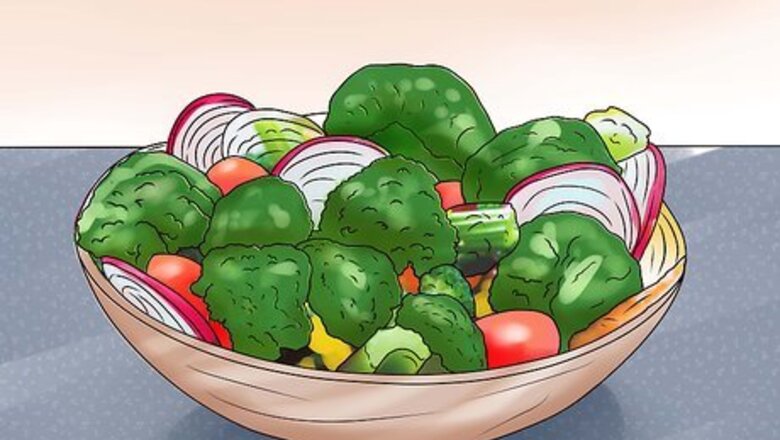
views
Cooling Food to Eat

Don't leave your food out on the counter for too long. Use this section to cool your food down to an edible temperature. Do not leave it sitting out for more than two hours. If you want to cool your food down for storing in the fridge or freezer, or if you think it will take longer than 2 hours for your food to cool, click here.

Divide the food into smaller portions. A small amount of food will cool faster than a large amount of food. If you are trying to cool off a solid, such as a piece of steak or a potato, try cutting it into smaller pieces. If you are trying to cool off a liquid, try pouring it into a larger, but shallower container—or into two, smaller containers.
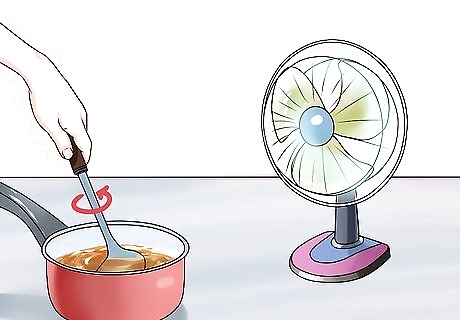
Set the food down in front of a fan. The moving air will help shift the heat away from your food. Be sure to stir the food often so that it cools evenly. If you don't have a fan, try fanning it with a stiff sheet of paper or folder instead. You can also blow on your food, in a pinch.
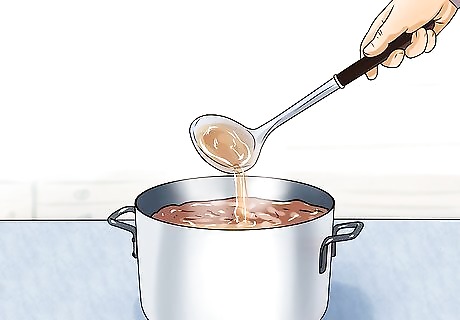
Stir or toss the food around in its bowl. The food closest to the surface will cool down the fastest. By stirring your food up, you will be bringing the hot food up to the surface so that it can cool down. The already-cool food will sink to the bottom and help cool the rest of your meal down.

Add an ice cube to hot soup. Stir the soup every so often to help distribute the coldness. The one downside to this is that the melting ice can dilute the flavor of the soup. You can also use plastic, reusable ice cubes instead. They won't melt and release water into your soup.
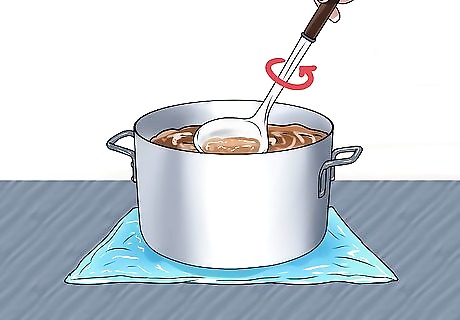
Place the bowl of food on top of a gel-filled ice pack. Press down on the bowl (or plate) so that it sits snugly on top of the pack. Stir the food every so often so that it cools evenly.
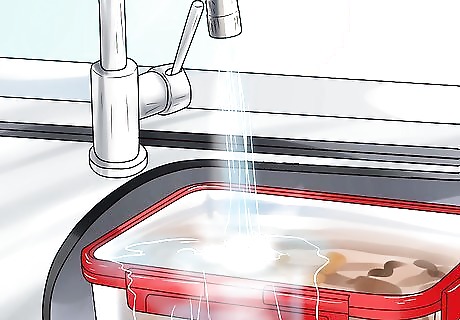
Place the food into an airtight box and hold it under cold, running water. Turn the container around, so the cold water hits it from all sides. Every so often, open the container and stir the food. This will distribute the cold and help it cool more evenly.
Place the over heated food in the fridge for about 3 minutes. Keep a lid over the food to keep moisture from building up in your fridge. Note that this should only be used for small, single-serving amounts of food. If you are trying to cool down an entire family meal, try one of the methods from this section instead. Avoid placing hot food into the freezer, however; this can cause the rest of the food in the freezer to thaw and spoil.
Cooling Food for Freezing
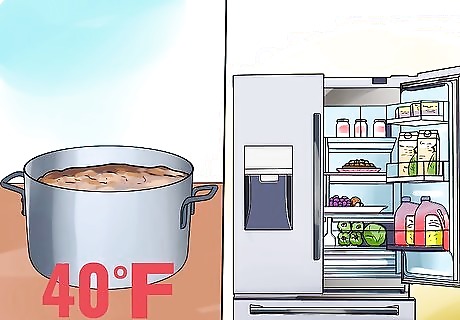
Cool your food quickly before storing it in the fridge or freezer. If you store warm food in the fridge/freezer, the surrounding food will begin to thaw and spoil. Your food also won't cool evenly. At the same time, you need to cool it quickly, or your food will become a breeding ground for bacteria. If you plan on storing your food in the fridge/freezer, it must reach 40°F (4°C) first. According to food safety specialists, the "danger zone" for food is between 140°F and 40° F (60°C and 4°C). Bacteria grows and breeds at these temperatures. Food should not remain in the "danger zone" for more than two hours. Once the food has reached 40°F (4°C) it is safe to be stored in the fridge/freezer.
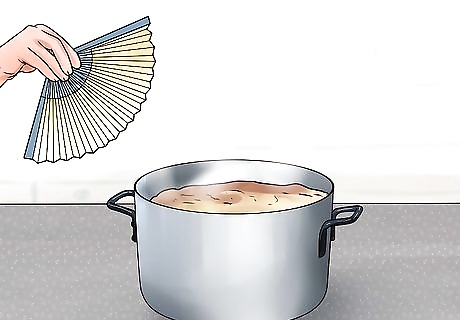
Keep the air flowing. Try to have a fan on or a window open. This will help stir the air, and move the hot air away from the cooling food. If you have a free-standing fan, point it at the food you want to chill.
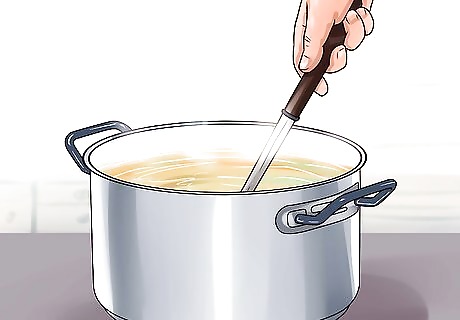
Keep thick foods, such as refried beans and stews, in loosely-covered, shallow pans or pots. The pan should be about 4 inches (10.16 centimeters) tall, and the food inside should be no more than 2 inches (5.08 centimeters) deep. Stir the food often to help release heat. Keep the pan loosely covered when you are not stirring the food to prevent contamination. This method is also good for liquids, such as soups and sauces. Try to use metal containers, such as stainless steel, instead of plastic or glass. They will cool down. If you can't find any shallow containers, then spread the food in a thin, 2 inch (5.08 centimeters) deep layer across the bottom of a larger container.
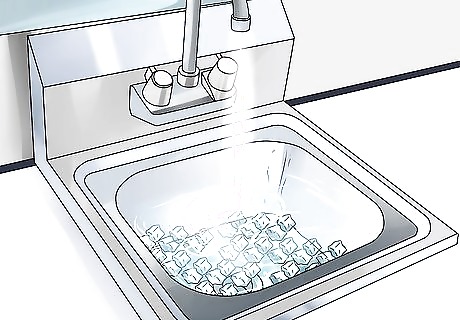
Try an ice bath for soups. Fill a sink with ice and some cold water to make a "slush." Place the pot with food in it into the sink. The food should be level with the icy water. Stir the food every 10 to 15 minutes. This helps it cool more evenly. Check the temperature of the food with a meat thermometer. When the food reaches 40°F (4°C) you can store it in the fridge/freezer. The ice will melt over time. When this happens, pour out the excess water and add more ice. If the food is taking too long to cool, separate it into smaller containers.
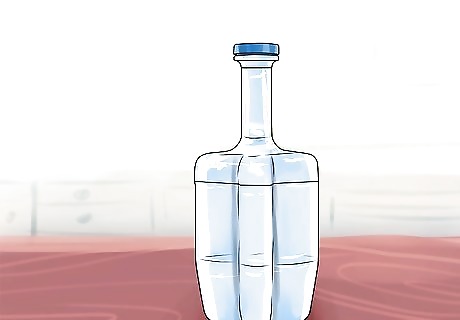
Try an ice paddle or a cooling paddle. These are what commercial kitchens use for cooling soups and similar food items. They are plastic paddles that are filled with water, and then frozen. Simply stir your soup with the ice or cooling paddle until it reaches the required temperature. The benefit to using ice or cooling paddles is that you won't dilute the flavor or texture of your soup. Consider wearing a glove or oven mitt to protect your hand from the cold paddle. This can be combined with an ice bath for even faster chilling.

Use some ice instead of water in your recipe. Follow the original recipe, but use less water. Towards the end of the cooking process, add some ice. Make sure that the amount of ice you are using makes up for the amount of water you reduced. You can plop in a few ice cubes after you have finished your sauce or soup instead, but the ice will add more water to your food once it melts, and dilute the flavor.

Cut solid food down into smaller portions. This is ideal for things like meat, but can also be used for other items, such as lasagna and enchiladas. If you are going to freeze any of these items, you will likely to cut them down into small portions to make defrosting and reheating easier. Try to cut these foods down into individual-sized portions. They will cool down much faster.



















Comments
0 comment